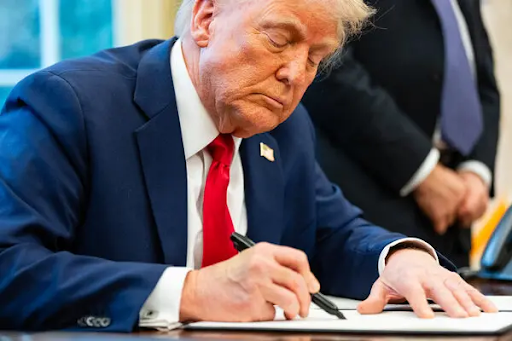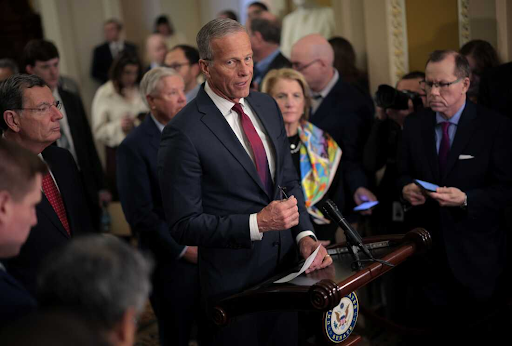When President Donald Trump signed an executive order on Feb. 3, directing the Treasury Department to develop a United States Sovereign Wealth Fund (SWF) within the next year, reactions immediately emerged — some hailed it as a visionary move to transform the American economy, while others saw it as a financial gamble the country cannot afford. The proposal thrusts the US into a league of nations like Norway, China, and Saudi Arabia, where such funds manage vast national assets and drive long-term investment strategies (Quartz). But unlike oil-rich Gulf states or export-heavy Asian economies, the US lacks a natural surplus to bankroll such a fund, raising urgent questions about its feasibility.
This isn’t the first time the idea of a US sovereign wealth fund has surfaced. During his presidency, Joe Biden’s administration quietly explored the possibility of a similar fund, particularly as a means of securing long-term investments in domestic manufacturing and clean energy (Bloomberg). Some of his economic advisors proposed leveraging federal revenues — especially from corporate tax adjustments — to create a government-backed investment vehicle that could channel profits into infrastructure and technology. The idea stalled, however, amid political gridlock, budget constraints, and competing priorities within Biden’s broader economic agenda.
Now, President Trump is reviving the concept, but with a different strategy — one focused on tariff revenues, asset sales, and high-profile acquisitions. While the approaches differ, the bipartisan interest in establishing a sovereign wealth fund suggests a rare area of overlap between administrations, which may signal the long-term economic appeal of such a model.
At its core, Trump’s sovereign wealth fund aims to boost economic sustainability, reduce the tax burden, and expand national investments in infrastructure, manufacturing, and technology. It’s an ambitious idea, but the mechanics of funding it — and the potential risks — remain unclear.
A Sovereign Wealth Fund Without a Surplus?
Traditionally, sovereign wealth funds are financed through commodity surpluses (like oil revenue in Norway and Saudi Arabia) or trade surpluses (as seen in China and Singapore). The United States, however, is grappling with a $1.7 trillion budget deficit and a growing national debt exceeding $34 trillion (USA Facts).
So where will the money come from? The Trump administration has floated several possibilities, including:
- Tariff Revenues – Using money collected from foreign imports, especially from China, Mexico, and Canada. Critics argue that tariff revenues aren’t stable enough to fund a long-term investment fund. Supporters, however, see an opportunity to make America’s balance sheet work for the American people and continue to boost domestic industries (US Global Investors).
- Monetizing Federal Assets – Selling or leasing public land, mineral rights, and possibly even government-owned stakes in companies.
- Strategic Acquisitions – Investing directly in high-value firms, such as TikTok, an idea President Trump recently floated in interviews. The proposal aligns with the administration’s broader push to counter Chinese influence in the tech sector while turning government-held investments into long-term national assets. The idea has already sparked debate, with supporters arguing that acquiring TikTok through the sovereign wealth fund would ensure Americans’ data security and generate revenue. The legal and financial logistics of such a move remain unclear, however, as it would likely require congressional approval and could escalate tensions with China (Reuters).
Potential Impact on the US Economy
If structured properly, a US sovereign wealth fund could:
- Reduce reliance on taxation by generating investment-based government revenue.
- Strengthen domestic industries by investing in critical infrastructure, tech, and manufacturing.
- Create a national financial buffer against economic downturns.
If poorly managed, however, the fund could become a political tool rather than an independent investment entity. Some experts fear that using tariff revenues could escalate trade tensions, leading to retaliatory measures from China and Europe. Others caution that investing government money in private markets could create conflicts of interest and open the door to corruption or favoritism in investment decisions.
A Historic Gamble or a Strategic Move?
Proponents of the plan compare it to the Alaska Permanent Fund, which has used oil revenue to provide direct payments to state residents since 1982. They argue that a national version could turn government revenue into an asset for the American people rather than a constant cycle of borrowing and taxation (Business Insider).
The Path Forward
Under the executive order, the Treasury and Commerce Departments have 90 days to present a comprehensive framework for the fund. The plan will likely face intense scrutiny from Congress, where lawmakers will debate whether the US should even pursue such an initiative (White House).
For Trump, the move signals an aggressive shift in economic policy, aiming to establish long-term investment strategies rather than short-term deficit spending. Whether it turns out to be a bold economic masterstroke or an unsustainable financial risk will depend on how the fund is structured, governed, and funded.
One thing is certain — this is not just another simple policy proposal. If implemented, a US sovereign wealth fund could revolutionize how the federal government manages its finances for decades to come.
By Sanya Nadeem ’26, Assistant Politics & Opinions Editor
26snadeem@montroseschool.org













